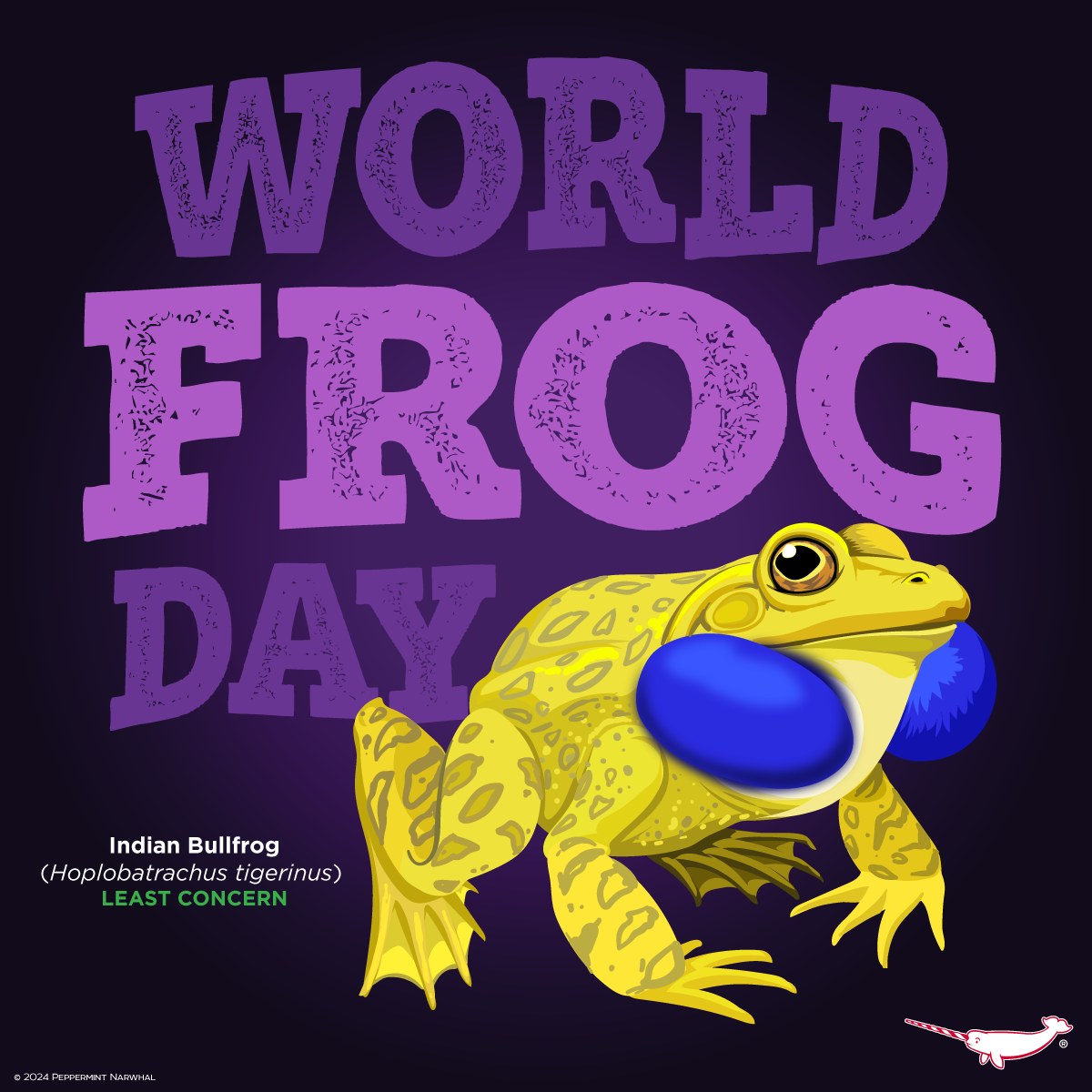– The colorful transformation and mating display of the male Indian Bullfrog (Hoplobatrachus tigerinus) during the breeding season.
– The significance of sexual dimorphism in frogs and its role in mating and survival strategies.
– The importance of wildlife conservation and how days like Happy World Frog Day contribute to awareness and action.
– The role of zoology and zoo management in conservation efforts and public education.
The male Indian Bullfrog (Hoplobatrachus tigerinus) exhibits a fascinating transformation during the breeding season, changing from a relatively subdued green or brown color to a striking bright yellow. This sudden shift in appearance is complimented by the inflation of the bullfrog’s dark blue vocal sacs, a display aimed at attracting female mates. This occurrence is a spectacular natural phenomenon and an insightful example of sexual dimorphism in the animal kingdom.
Sexual dimorphism, the difference in size or appearance between males and females of the same species, plays a crucial role in many organisms’ mating rituals and survival strategies, including frogs. In the case of the Indian Bullfrog, these physical and behavioral adaptations are critical for reproduction. The males’ vivid colors and loud calls during the breeding season increase their visibility and attractiveness to females, albeit at the risk of also attracting predators. Conversely, females remain larger but more subdued in color, focusing on the selection of mates and the subsequent nurturing of offspring.
Happy World Frog Day elevates public consciousness about frogs, their vital roles in ecosystems, and the threats they face. Frogs are indicators of environmental health, and their decline signals problems in ecosystems that could affect countless other species, including humans. This day provides an opportunity to engage in wildlife conservation efforts, educate the public about the importance of amphibians, and encourage actions that support amphibian populations globally.
Incorporating zoological expertise and effective zoo management practices is critical to conserving species like the Indian Bullfrog. Zoos serve as places for public amusement and as centers for education, research, and conservation. They can offer refuge to endangered species, facilitate breeding programs, and reintroduce animals into wild populations. Zoological professionals work diligently to mimic natural habitats within zoo settings, contributing significantly to the survival of many species. Furthermore, by providing educational programs, zoos play an essential role in informing visitors about wildlife’s challenges and the importance of conservation efforts.
Wildlife conservation is a multifaceted field that requires collaboration among zoologists, conservationists, governments, and the public to be effective. Happy World Frog Day exemplifies how themed days can galvanize interest and support for conservation issues. Public engagement and education can foster a deeper appreciation for frogs and their ecological value, encouraging actions that contribute to their protection and preservation.
In essence, celebrating Happy World Frog Day and studying species like the Indian Bullfrog highlight the beauty and complexity of nature while underscoring the importance of conservation efforts. By understanding and appreciating these amphibians’ intricate behaviors and adaptations, we can better support initiatives designed to protect them and ensure their survival for future generations. Engaging the public through education and awareness is fundamental to the success of these initiatives, making the roles of zoology and zoo management indispensable in the broader context of wildlife conservation.
*****
Source Description
Happy Word Frog Day!
The male Indian Bullfrog (Hoplobatrachus tigerinus) is normally green or brown with dark spots, but during the breeding season, he turns bright yellow. If that wasn’t enough to get noticed, he has one more standout maneuver. He calls and displays to females by inflating his dark blue vocal sacs.
Females are larger but more pale and brown. These breeding differences are examples of both sexual dimorphism and sexual dimorphism.
Frog Merch:https://www.peppermintnarwhal.com/s/search?q=frog
…and Shop
for a wide range of other species.
www.peppermintnarwhal.com


